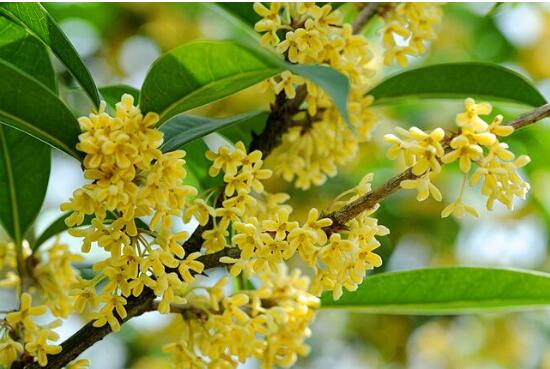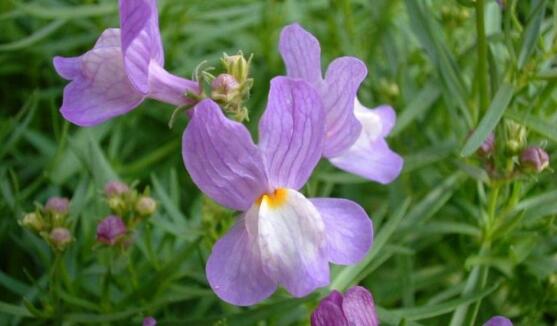What about the growing insects of potted lotus flowers? control of lotus diseases and insect pests / cutting withered leaves and spraying insecticides to kill insects
Insects can grow in any plant in nature, and lotus is no exception. Lotus is one of the top ten famous flowers in China. Lotus is very popular without being stained with mud. Now many families have raised lotus flowers, but they don't know what to do with lotus bugs. Let's take a look at lotus pest control with Xiaobian.
What about the lotus bugs? spray to kill the insects

Lotus is one of the top ten famous flowers in China. With the progress of pot technology, many people have raised lotus at home. What to do with lotus bugs is the most common problem. Common lotus pests are aphids, water maggots, caterpillars, Spodoptera litura and so on. Different pest control methods will be different. Let's take a look at lotus pest control with Xiaobian.
2. prevention and control of lotus diseases and insect pests
1. Aphids
Aphids generally began to harm the floating leaves and small standing leaves of lotus in early May, often concentrated on leaf buds, buds and leaf backs, larvae and adults sucked juice, especially in late spring and autumn. Prevention and treatment: 20% fenvalerate 2000 times solution can be used.
2. Spodoptera litura and Plutella xylostella
Spodoptera litura and Spodoptera litura are commonly known as Caterpillar, which mainly harms the standing leaves by larvae, generally from mid-June to September. Control method: remove the insect leaves and burn them. Spray with 90% trichlorfon 800 to 1000 liquid, or 2.5% enemy kill 3000 times solution.
3. Water maggots
The larvae suck the juice on the stem nodes and roots of the lotus, causing the diseased leaves to turn yellow. Prevention and control methods: lime can be used to drive and kill. Sprinkle 1015kg per 667 square meters (1 mu), but not too much.
4. Spodoptera litura
The main harm to standing leaves, when serious, the back of the lotus leaves can hang 20 or 30, they will eat the new and old lotus leaves riddled with holes, or even all eaten up.
Prevention and treatment: artificial capture can be used to remove the diseased leaves in time. Spray and kill with 1 500-2000 times of trichlorfon and 800 times of trichlorfon. Remove the weeds on the edge of the lotus root field, and carry out disinfection treatment, lotus disease and insect pest control we continue to look down.
5. Spodoptera litura
Also known as lotus armyworm, twill burglar. The first egg larvae gather to gnaw on the back of the leaves, leaving only the upper epidermis and veins, and the injured leaves are like screens. Disperse the harm after 3 years old, eat the leaves into lacerations, often eat up the leaves, and even bite the young stems. When a large occurrence occurs, the larvae can migrate to the adjacent fields in groups after eating up a field.
Prevention and control methods: domestic B.T emulsion or cyanobacteria No. 6 liquid 500 times 800 times were sprayed. Phoxim 50% EC 1000 times, or deltamethrin 2.5% EC 3000 times, or 21% germicidal EC 4000 times. Through the above introduction, now you know what to do with lotus bugs. Let's take a look at the prevention and control of lotus diseases.
III. Control of lotus diseases
1. Black spot
In the early stage of the disease, chlorotic yellow spots appear on the leaves, and in the later stage, they are round or irregular, turn brown and have wheel lines, sometimes with yellowish-green halos on the edges, and upper black mildew layers with a diameter of 5-15 mm. In severe cases, the disease spot is connected into a piece, and the whole leaf is withered and yellow except for the veins. The disease is caused by fungi, serious in rainy season, continuous cropping in lotus ponds or pots, excessive application of nitrogen fertilizer or high water temperature in summer, the disease is very serious.
Prevention and control methods: strengthen cultivation management and remove diseased leaves in time. Plants with serious disease should be replanted in new soil without partial application of nitrogen fertilizer. When the disease occurs, 75% chlorothalonil 600 times 800 times solution can be sprayed for prevention and control.
2. Rot disease
It mainly harms leaves, pedicels and lotus roots. When the leaves are damaged, the green and withered patches are produced along the leaf edge at first. Soon the spot spread into the leaf, and finally the whole leaf turned brown and necrotic. When the pedicel occurs, it turns brown and sunken along the stomatal line. Lotus root disease, first brown, gradually turn to whip node, longitudinal necrosis, but also can see the diseased lotus root node grow white filamentous or pink pile. The disease is usually more serious under continuous cropping and when the soil is poor, and it is also easy to occur if the leaves are often flooded.
Prevention and control methods: appropriate fertilization, pay attention to the water surface should not be too high, so as not to soak the leaves and lead to the disease. It is found that when black spots appear on the leaves, the diseased leaves should be removed as soon as possible, but the connection between the leaves and the petiole should be retained to prevent Rain Water from invading the body from the petiole wound. Spray 50% carbendazim 500 times solution, or 50% Phytophthora Jing 500 times solution for control.
3. Brown spot
It mainly harms the lotus leaves. Round spots with a diameter of 0.5 mm to 8 mm appeared on the diseased leaves, showing light brown to yellowish brown, with dark edges. In the later stage of the disease, there were many black mildew spots on the disease spot. The disease is more serious when it is rainy in autumn. Most of the germs overwintered on the remains.
Prevention and treatment: remove the residual leaves and reduce the source of the disease. If the disease is serious, 50% carbendazim 500 times can be sprayed, or 80% Dysen zinc 500 times 800 times can be used for prevention and treatment. The above is the lotus pest control, lotus long insect how to do all the content, I hope to help you.
What about the growing insects of potted rose flowers? disease and pest control of rose flowers (spraying insecticides)
Worms can grow in any plant, and rose flowers are no exception. Rose is one of the best indoor flowers to raise. Its survival rate is very high, but it may die if you don't take good care of it. The most common pest of rose flowers is the red spider, which can cause the leaves of rose flowers to turn yellow and wither. What about the growing bugs of rose flowers? let's take a look at the pest control of rose flowers.
First, what about the long bugs in rose flowers? spray medicine immediately.
Chinese rose is a kind of plant that likes light very much. if it is left without light for a long time, it will have symptoms and worms. Rose long bugs are very common, there are many reasons for growing insects, need to prescribe the right medicine. The most common bugs are red spiders, aphids, thrips and so on. What about rose worms? Let's take a look at the disease and pest control methods of rose flowers.
Prevention and control of diseases and insect pests of rose 1. Red spider
Leaf mites are also known as red spiders. There are mainly two kinds of leaf mites that harm Chinese roses: one is cinnabar spider mite, which is insect red, and the other is two-spotted spider mite, which is yellow to yellowish green.
Symptoms: generally, leaf mites will parasitize on the back of the leaves to absorb juice, while there will be many small yellow and white spots on the front of the leaves, and then the leaves will slowly yellowing and finally fall off. In serious cases, the whole buds and branches will be full of spider mites.
Solution: stone-sulfur mixture can be sprayed evenly during the stinging period, and avermectin, propargite, paraben, paracetamol and so on can be sprayed at the initial stage.
2. Flower aphids
Aphids will gather on the buds, leaves and buds of the rose to suck their juice, and in severe cases there will be nectar-like black secretions to reflect the quality of the flowers and the growth of the rose.
Solution: when aphids lay eggs in autumn and winter, imidacloprid and avermectin can be used alternately.
3. Thrips
When thrips live in young leaves, they will die at the top, making it unable to grow. If it feeds at the back of the leaf and excrete brown substance, it will deform the back of the leaf, and gray or grayish brown stripes will appear on both sides of the midrib, deforming and bending.
Solution: for the prevention and control of diseases and insect pests in rose flowers, you can spray chemicals for treatment, and choose those that contain effective ingredients such as imidacloprid, acetamiprid, thiazine and so on.
4. Rose stem wasp
A generation occurs every year, laying eggs under the inner diameter epidermis from April to May, then drilling into the stem after hatching, then spirally cutting down along the cambium to feed on the lower part of the branch, and then making a pupa chamber in the branch after ripening, in the shape of a barrel.
Solution: the effective control method is to cut off the diseased branches, cut down the branches until the larvae are found, and then destroy them.
5. Short-forehead negative locust
The short-forehead negative locust will bite the leaves into many holes, produce two generations a year, lay eggs in winter, and hatch adults from May to June.
Solution: can spray 50% fenitrothion 1000 times solution, the mortality rate is very high, the effect is very good.
How to grow bugs in potted rose flowers? we can find out the cause according to the above description and prescribe the right medicine. The above are all the answers to the disease and pest control of rose flowers. I hope I can help you.
What about tequila worms? tequila pest control / shell insect spray
Tequila, a foliage plant, blossoms only once in its life and dies soon after, which is impressive. In life, many people keep tequila at home, but for some reason, the plant will be infested by bugs, so what about tequila worms? The following are several common tequila diseases and insect pests and their solutions, follow the editor to find out.
What about the tequila worms? find the cause.
In the culture method of tequila, there is an introduction to the environmental requirements of tequila, and once the flower friends can not meet, it will get sick and be attacked by insects. As for what to do with tequila worms, first of all, we have to determine what kind of pest it is, and then solve it. Specific tequila pest control, let's move on.
Second, tequila diseases and insect pests control, shell insects are the main pest
1. Scale insects
This insect harms many plants, including tequila, naturally. It is understood that the shell insect mainly harms the leaves of tequila, and when serious, the leaves will yellowing, withering, or even falling, seriously affecting the indoor ornamental effect of tequila.
Solution: when the above symptoms are found and scale insects are found, flower friends can be divided into two situations: first, when a small number of scale insects are found, they can be scraped off directly; second, when there are a large number of scale insects, 50% parathion can be sprayed and killed.
Netizen: the tequila at home has worms. What should I do?
As shown in the picture above, this is a problem encountered by many flower lovers of potted tequila, and this is the shell bug, which is obviously very serious, so flower friends can use 50% of the parathion to spray. In addition, you can also buy a certain treasure scale must be treated, a spray on the line.
2. Shield scale, pink scale, root pink scale
In addition to shell insects, there are shield scale, pink scale, root pink scale is also one of the tequila diseases and insect pests, the first two harm is the leaf, the latter harm is the root, serious and even lead to plant death. The three pest solutions are different, as follows:
① for the shield scale and pink scale parasitic on the leaves of tequila can be removed with bamboo sticks and tweezers, and then sprayed on the plant. Specific drugs: 1000 times of dichlorvos EC spray.
② has a different solution to the root pink scale. Once found, the flower friends should turn the pot to change the soil in time, remove the worms from the roots and cut off the rotten roots when changing the soil. After that, soak the remaining roots in the medicine solution for 1 hour or 2 hours, take them out and dry them, and then put them on the pot.
Tequila disease, leaf spot / anthracnose / Botrytis cinerea
Tequila grows bugs, read the above content, we should know how to do it! However, in addition to insect pests, the disease also endangers the health of tequila. It is understood that the common diseases of tequila are leaf spot, anthracnose and gray mold. The specific symptoms and solutions are as follows:
1. Leaf spot
The disease is one of the common diseases of tequila, symptoms: small lesions on the leaves, nearly round, gray, and gradually expand combined with irregular large rotten spots.
Solution: when the above symptoms are found, flower friends should remove the residual amount of diseased leaves in time. When the disease is serious, spray with 1000-1500 times of demulsified oil, spray 2-3 times every 7-15 days, after a period of time, the plant will return to health.
2. Anthrax
Tequila is one of the main diseases, which mainly harms the leaves and causes pathological changes and disease spots in the leaves. The disease spot is light green or dark yellowish brown at first, then it gradually changes to dark brown, and finally the whole leaves rot away. So the disease is also one of the reasons for the yellowing of tequila leaves.
Solution: when the disease is found, the rotten leaves should be removed in time to avoid the spread of the pathogen. If necessary, you can spray 70% methyl topiramate 800 times or green milk copper 100 times, once every 7 to 10 days, the most several drugs are cross-used to avoid drug resistance.
3. Grey mold
Another disease of tequila, which mainly harms the leaves of tequila. Symptoms: the leaves will produce yellow-green to dark green water-like plaques, gradually expand, when wet soft rot, the affected part of the gray, khaki mildew layer.
Solution: when the disease is found, the diseased leaves of the horse should be removed in time to avoid contact with infection. If necessary, 50% carbendazim 500 times or 75% chlorothalonil 500 times can be sprayed, and it can be basically solved after a few times.
With regard to the content of tequila diseases and insect pests, the editor has introduced this, and I believe you have already remembered it. In fact, tequila is easy to raise, and the efficacy and effect of tequila is very strong, not only has the ornamental effect, but also has the function of purifying the air. Therefore, in the daily maintenance, flower friends must be careful and careful!
- Prev

What about the growing insects of sweet-scented osmanthus in potted plants? control of diseases and insect pests of sweet-scented osmanthus (spraying for different diseases and insect pests)
Insects can grow in any plant, and sweet-scented osmanthus is no exception. With the progress of pot technology, sweet-scented osmanthus can also be raised at home. Sweet-scented osmanthus is one of the flower plants that can easily grow insects, so what about sweet-scented osmanthus worms? There are many kinds of insect pests in sweet-scented osmanthus, and each control method will be different.
- Next

What to do with the growth of worms? prevention and control of diseases and insect pests / 4 major diseases and 4 major pests
Goldfish grass, like its name, is shaped like a goldfish with bright colors, so it is a good product for indoor farming. In spite of this, the goldfish grass is still a plant, and it will inevitably be disturbed by insects, so what if the goldfish grass grows worms? In the process of cultivating goldfish grass, except for insect pests
Related
- Fuxing push coffee new agricultural production and marketing class: lack of small-scale processing plants
- Jujube rice field leisure farm deep ploughing Yilan for five years to create a space for organic food and play
- Nongyu Farm-A trial of organic papaya for brave women with advanced technology
- Four points for attention in the prevention and control of diseases and insect pests of edible fungi
- How to add nutrient solution to Edible Fungi
- Is there any good way to control edible fungus mites?
- Open Inoculation Technology of Edible Fungi
- Is there any clever way to use fertilizer for edible fungus in winter?
- What agents are used to kill the pathogens of edible fungi in the mushroom shed?
- Rapid drying of Edible Fungi

